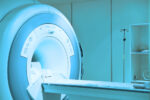MRI imaging of sciatic nerve may help to ID FAP patients: Study
Scans also found to ID carriers of rare disease with no symptoms

Advanced MRI imaging of the sciatic nerve — a large bundle of nerve fibers running from the lower back down the length of the leg — may help to distinguish familial amyloid polyneuropathy (FAP) patients from healthy people, a study found.
Such scans also may work to identify presymptomatic carriers, or people with FAP-causing mutations who are not yet showing symptoms.
Researchers believe the MRI measures could be used as biomarkers, helping to identify patients who will later have nerve involvement, as well as to monitor those who already have symptoms of FAP, a form of hereditary transthyretin amyloidosis (ATTRv).
Overall, these “findings confirm the clinical impact of magnetic resonance advanced techniques in the diagnostic workup of ATTRv amyloidosis,” the scientists wrote.
The study, “Magnetic resonance neurography and diffusion tensor imaging of the sciatic nerve in hereditary transthyretin amyloidosis polyneuropathy,” was published in the Journal of Neurology.
MRI of sciatic nerve shown to differentiate patients, healthy people
FAP, also known as ATTRv with polyneuropathy, is a form of the genetic disorder in which the peripheral nerves, or those outside the brain and spinal cord, are primarily affected; this is called polyneuropathy. Like other AATRv forms, FAP is caused by mutations in the TTR gene, which result in the toxic accumulation of an abnormal version of the transthyretin protein in the body’s cells.
As new treatments for FAP and ATTRv emerge, it now is recognized that an early diagnosis helps patients receive therapy sooner, improving their prognosis. Thus, a search for early disease biomarkers is underway.
Advanced MRI techniques could offer one way of evaluating the health of the peripheral nerves, with an ability to detect even subtle nerve abnormalities that can’t be captured by standard tests of nerve-muscle health.
Indeed, studies have found that certain MRI techniques can be used for this purpose — but to date, “the complexity of the measures prevented their implementation in clinical settings,” the researchers wrote.
Now, the team, from Italy, investigated whether simplified MRI imaging measures of the sciatic nerve could be possible biomarkers for the early diagnosis and monitoring of ATTRv.
The researchers recruited 20 adults — 13 men and seven women — with TTR mutations at four Italian neurological centers. Among them, 13 were FAP patients and seven presymptomatic carriers. A total of 20 age- and sex-comparable healthy people also were included in the study as a control group.
All underwent magnetic resonance neurography (MRN), also known as peripheral nerve MRI, to evaluate the structure (morphology) and tissue integrity of the sciatic nerve. Another advanced MRI technique called diffusion tensor imaging, or DTI, also was used to assess very small-scale structural changes in the sciatic nerve.
The results showed that certain morphological changes differed between the three groups of people, and DTI abnormalities were identified in the two ATTRv groups. The scientists hypothesized that a combination of the measurements would enable the accurate differentiation of FAP patients, carriers, and healthy people.
Among MRN measures, cross-sectional area or CSA, a classic measure of structural nerve abnormalities, could distinguish FAP, but not carriers, from healthy controls. Conversely, normalized signal intensity or NSI, an indicator of tissue integrity, could differentiate both ATTRv groups from healthy people, but not from one another.
Used together, the two measures could distinguish all three groups, with FAP patients showing increased CSA and NSI along the entire thigh, and carriers having “nearly normal CSA and increased NSI compared to healthy controls,” the team wrote.
Scans have potential to ID patients decades earlier
DTI measures also could distinguish between the three groups, helping to identify signs of early sciatic involvement in ATTRv carriers.
These measures included fractional anisotropy, which reflects the microstructural integrity of individual sciatic nerve fibers, as well as radial diffusivity, an indicator of the degree of demyelination, or the loss of the protective sheath around nerve fibers.
Individual MRN and DTI measures could accurately distinguish between FAP and presymptomatic carriers and/or between carriers and the healthy controls.
Overall, “a quantitative evaluation of DTI and morphological parameters of the sciatic nerve was able to detect microstructural differences between [FAP], [presymptomatic carriers], and healthy controls,” the team wrote.
Imaging changes in the ATTRv groups correlated with some findings from neurophysiological tests of nerve-muscle health as well as clinical measures of polyneuropathy, strengthening their potential as disease biomarkers, according to the researchers.
The exception was NSI, which showed no significant association with neurophysiological findings.
The MRN/DTI measures may represent a sensitive tool to monitor the evolution from the status of pre-symptomatic carrier to patient in ATTRv amyloidosis and also may represent a quantifiable outcome measure in clinical trials.
The ability to detect peripheral nerve involvement in pre-symptomatic patients — potentially decades before the expected age of disease onset — could help these individuals to receive early treatment and improve their prognosis, the team noted.
“The MRN/DTI measures may represent a sensitive tool to monitor the evolution from the status of pre-symptomatic carrier to patient in ATTRv amyloidosis and also may represent a quantifiable outcome measure in clinical trials,” the researchers wrote.
Still, “further validation of our results is required in order to establish the role of MRN and DTI in monitoring the disease progression and the response to therapy,” they wrote.
A long-term MRI follow-up of participants as part of an ongoing Italian study is planned, according to the researchers.







